Mold Flow Analysis of Motor Core Gluing with Viscous Flow Channels and Dipping Module
Abstract
:1. Introduction
2. Experiment
2.1. Equipment
2.2. Material
3. Simulation
3.1. Theoretical Background
- Continuity Equation
- Momentum Equation
- Energy Equation
- Volume of Fluid, VOF.
3.2. Simulation Process
3.3. Mesh Generation
3.3.1. Filling Process
3.3.2. Dipping Process
3.4. Process Parameters
3.4.1. Filling Process
3.4.2. Dipping Process
3.5. Mold Flow Analysis Software
4. Results and Discussion
4.1. The Influence of Gravity on Simulation
4.2. The Influence of Flow Rate on Simulation
4.3. Results for Dipping an Iron Sheet
4.4. Air Traps Results
4.5. Comparison of the Target Value and the Simulation Results
5. Conclusions
- The properties of the fluid in the mold flow analysis are very important. In the present research, Kamal’s reaction dynamic model and the Cross Castro–Macosko viscosity model were used to define the material parameters, so the mold flow analysis could better describe the material characteristics.
- A mold flow analysis and a dipping analysis were used to compare the entire motor core filling and dipping process. The prediction results were very good for both the flow in the filling process and the dipping process, and it was possible to effectively predict the area where the air traps would occur when glued based on the results of the analytical software.
- Image analysis software (ImageJ) was used to analyze the resin area in the simulation results, for which the resulting area was 322.021 mm2 and the volume was 0.644 mm3. The target value of area is 320.8 mm2 and the volume is 0.64 mm3. The error value for the simulation results was 0.6%, which may have been caused by extracting the resin.
- The runner design will cause the resin to flow unevenly and there will be over-flow during the dipping process.
Author Contributions
Funding
Institutional Review Board Statement
Informed Consent Statement
Data Availability Statement
Conflicts of Interest
Appendix A
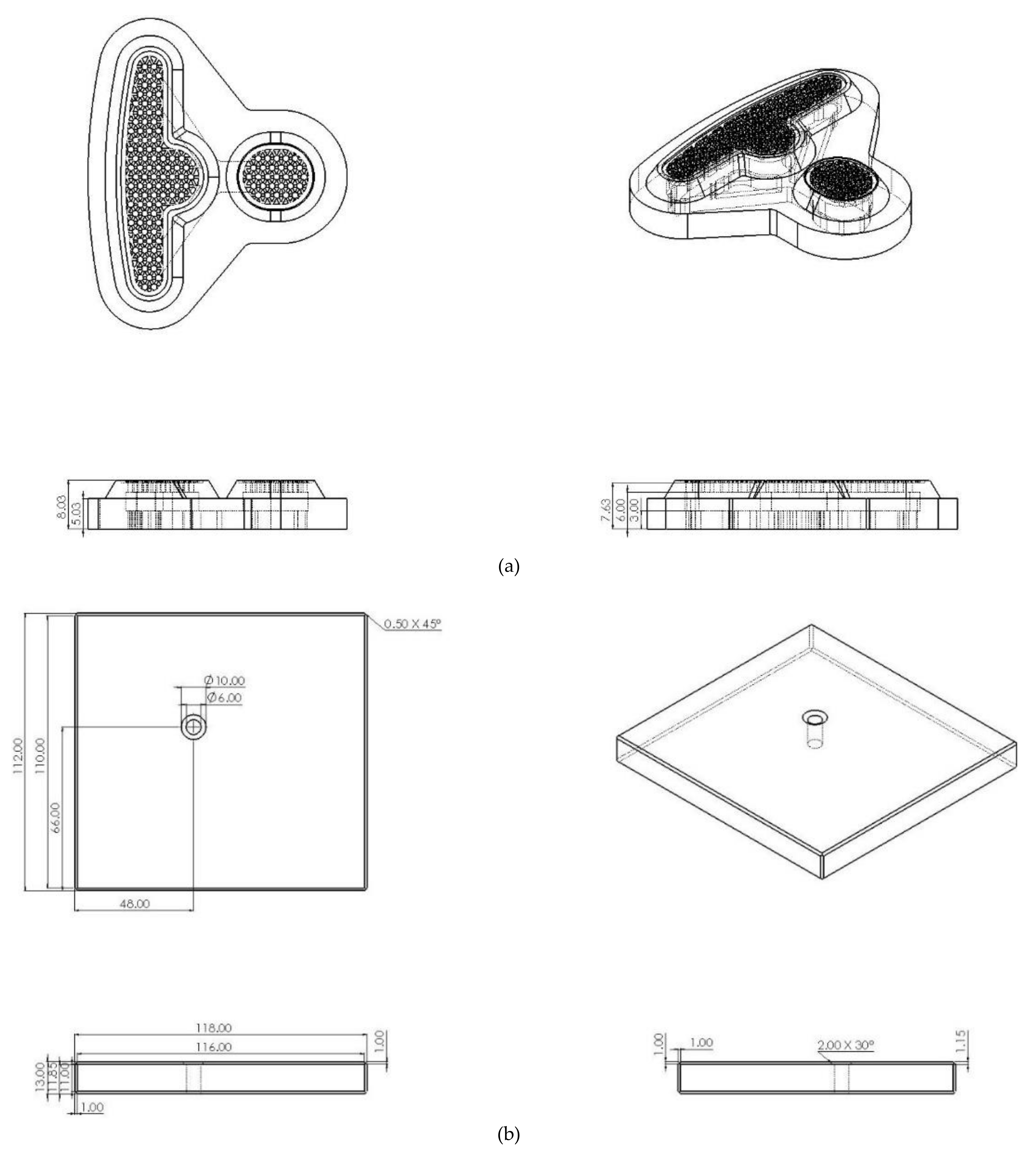
Appendix B


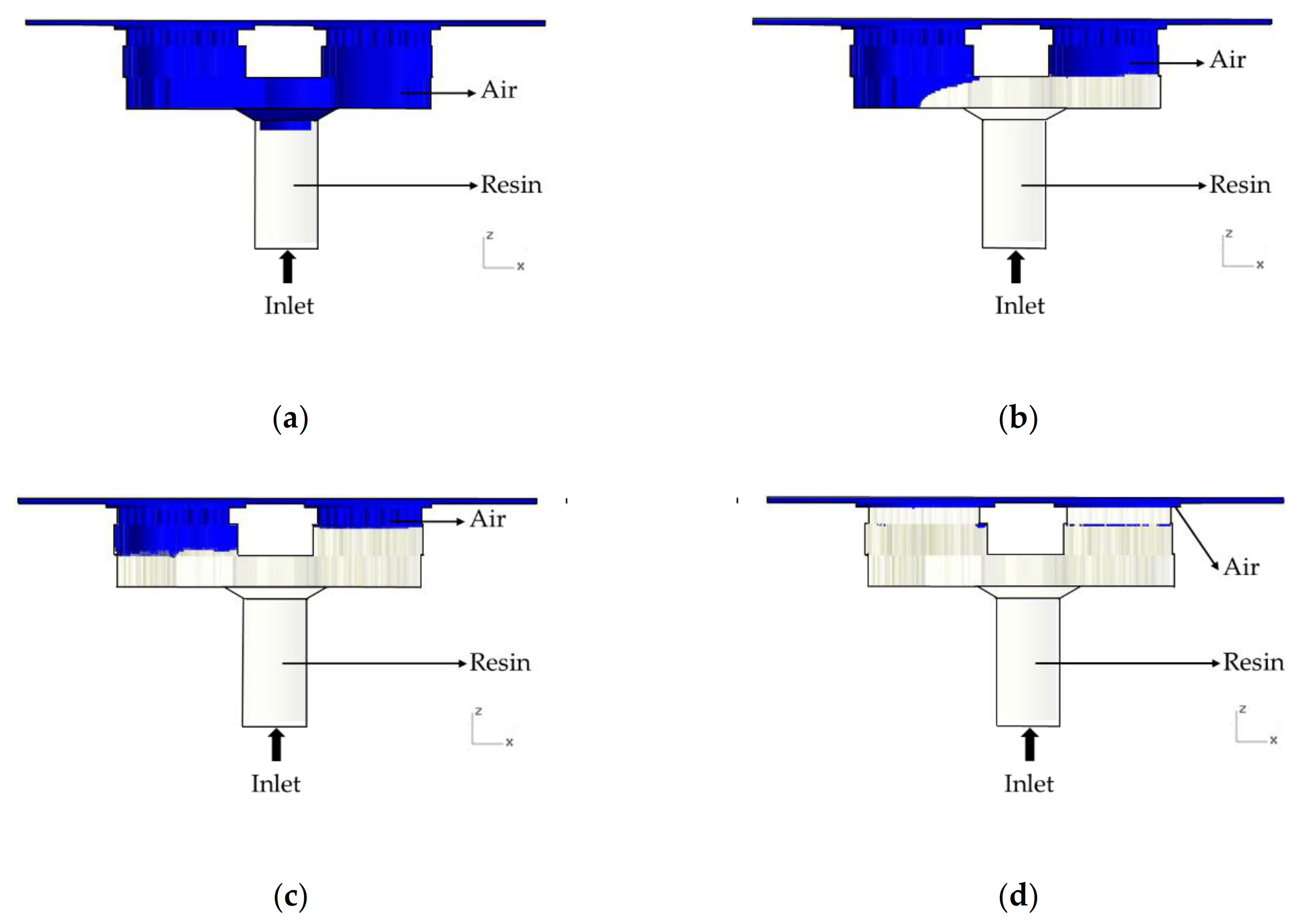
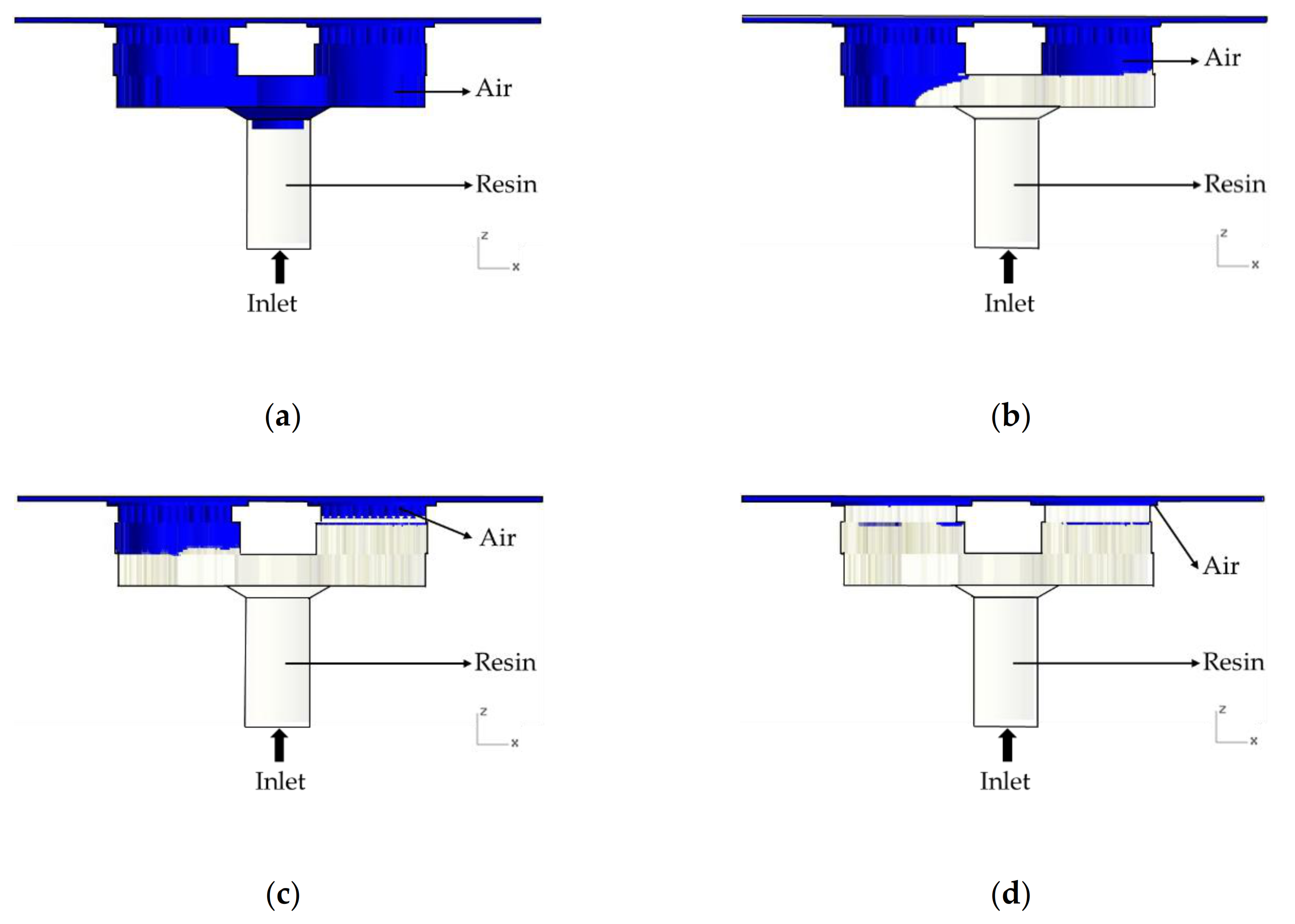
References
- Krings, A. Iron Losses in Electrical Machines-Influence of Material Properties. Ph.D. Thesis, Kungliga Tekniska Högsko-lan, Stockholm, Sverige, 2014. [Google Scholar]
- Lamprecht, E.; Graf, R. Fundamental investigations of eddy current losses in laminated stator cores created through the impact of manufacturing processes. In Proceedings of the 2011 1st International Electric Drives Production Conference, Nuremberg, Germany, 28–29 September 2011; pp. 29–35. [Google Scholar]
- Lamprecht, E.; Hömme, M.; Albrecht, T. Investigations of eddy current losses in laminated cores due to the impact of various stacking processes. In Proceedings of the 2012 2nd International Electric Drives Production Conference, Nuremberg, Germany, 15–18 October 2012; pp. 1–8. [Google Scholar]
- Chang, R.-Y.; Yang, W.-H.; Hwang, S.-J.; Su, F. Three-Dimensional Modeling of Mold Filling in Microelectronics Encapsulation Process. IEEE Trans. Compon. Packag. Technol. 2004, 27, 200–209. [Google Scholar] [CrossRef]
- Aniszewski, W.; Ménard, T.; Marek, M. Volume of Fluid (VOF) type advection methods in two-phase flow: A comparative study. Comput. Fluids 2014, 97, 52–73. [Google Scholar] [CrossRef] [Green Version]
- Srinivasan, V.; Salazar, A.J.; Saito, K. Modeling the disintegration of modulated liquid jets using volume-of-fluid (VOF) methodology. Appl. Math. Model. 2011, 35, 3710–3730. [Google Scholar] [CrossRef]
- Zhou, L.; Liu, D.-Y.; Ou, C.-Q. Simulation of Flow Transients in a Water Filling Pipe Containing Entrapped Air Pocket with VOF Model. Eng. Appl. Comput. Fluid Mech. 2011, 5, 127–140. [Google Scholar] [CrossRef] [Green Version]
- Abdullah, M.K.; Abdullah, M.; Mujeebu, M.A.; Kamaruddin, S.; Ariff, Z. A Study on the Effect of Epoxy Molding Compound (EMC) Rheology during Encapsulation of Stacked-CHIP Scale Packages (S-CSP). J. Reinf. Plast. Compos. 2008, 28, 2527–2538. [Google Scholar] [CrossRef]
- Chen, Y.-K.; Wu, G.-T.; Hwang, S.-J.; Lee, H.-H.; Hwang, D.-Y. Molded underfill for flip chip package. In Proceedings of the 2013 8th International Microsystems, Packaging, Assembly and Circuits Technology Conference (IMPACT), Taipei, Taiwan, 22–25 October 2013; pp. 310–314. [Google Scholar]
- Azmi, M.; Abdullah, M.; Ariff, Z.; Ismail, M.; Aziz, M.A.; Abdullah, M. Flow Behavior Analysis of Emc in Molded Underfill (Muf) Encapsulation for Multi Flip-Chip Package. J. Phys. Conf. Ser. 2018, 1082, 012015. [Google Scholar] [CrossRef]
- Duan, Y.; Wang, X.; Yang, D.; Wang, J.; Ye, W.; Wu, Y. Mold Flow Analysis of a SiP Package for Power Manage-ment. In Proceedings of the 2020 21st International Conference on Electronic Packaging Technology (ICEPT), Guangzhou, China, 12–15 August 2020; pp. 1–4. [Google Scholar]
- Domínguez, J.; Alonso, M.; Oliet, M.; Rojo, E.; Rodríguez, F. Kinetic study of a phenolic-novolac resin curing process by rheological and DSC analysis. Thermochim. Acta 2010, 498, 39–44. [Google Scholar] [CrossRef]
- Lai, J.-Y.; Chen, T.-Y.; Wang, M.-H.; Shih, M.-K.; Tarng, D.; Hung, C.-P. Characterization of Dual Side Molding SiP Module. In Proceedings of the 2017 IEEE 67th Electronic Components and Technology Conference (ECTC), Orlando, FL, USA, 30 May–2 June 2017; pp. 1039–1044. [Google Scholar]
- Castro, J.M.; Macosko, C.W. Studies of mold filling and curing in the reaction injection molding process. AIChE J. 1982, 28, 250–260. [Google Scholar] [CrossRef]
- Kamal, M.R. Thermoset characterization for moldability analysis. Polym. Eng. Sci. 1974, 14, 231–239. [Google Scholar] [CrossRef]
- Hsiao, H.K. Nonlinear Waves Interaction with Breakwaters. Master’s Thesis, National Sun Yat-sen University, Kaohsiung, Taiwan, 2004. [Google Scholar]
- Scardovelli, R.; Zaleski, S. Direct numerical simulation of free-surface and interfacial flow. Annu. Rev. Fluid Mech. 1999, 31, 567–603. [Google Scholar] [CrossRef] [Green Version]

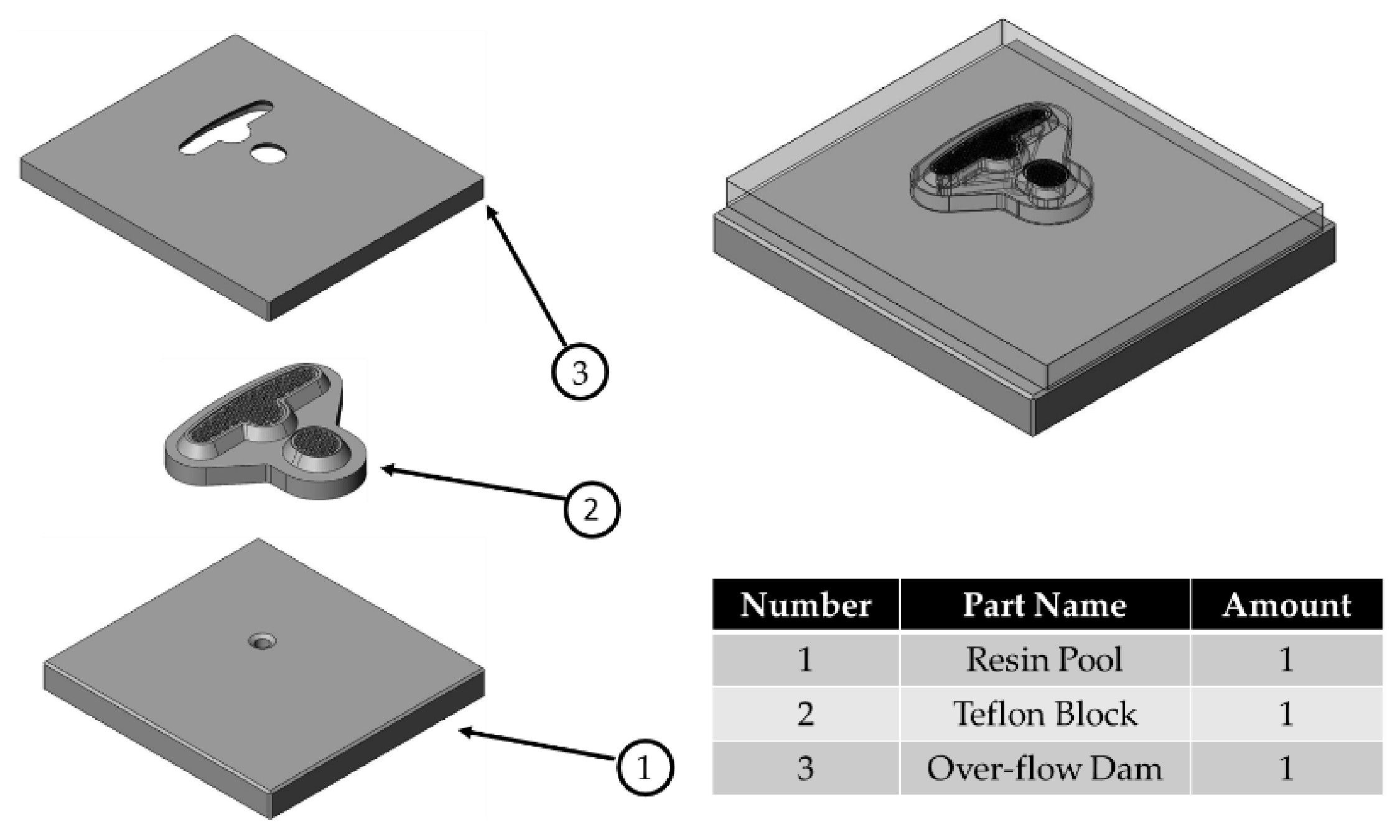

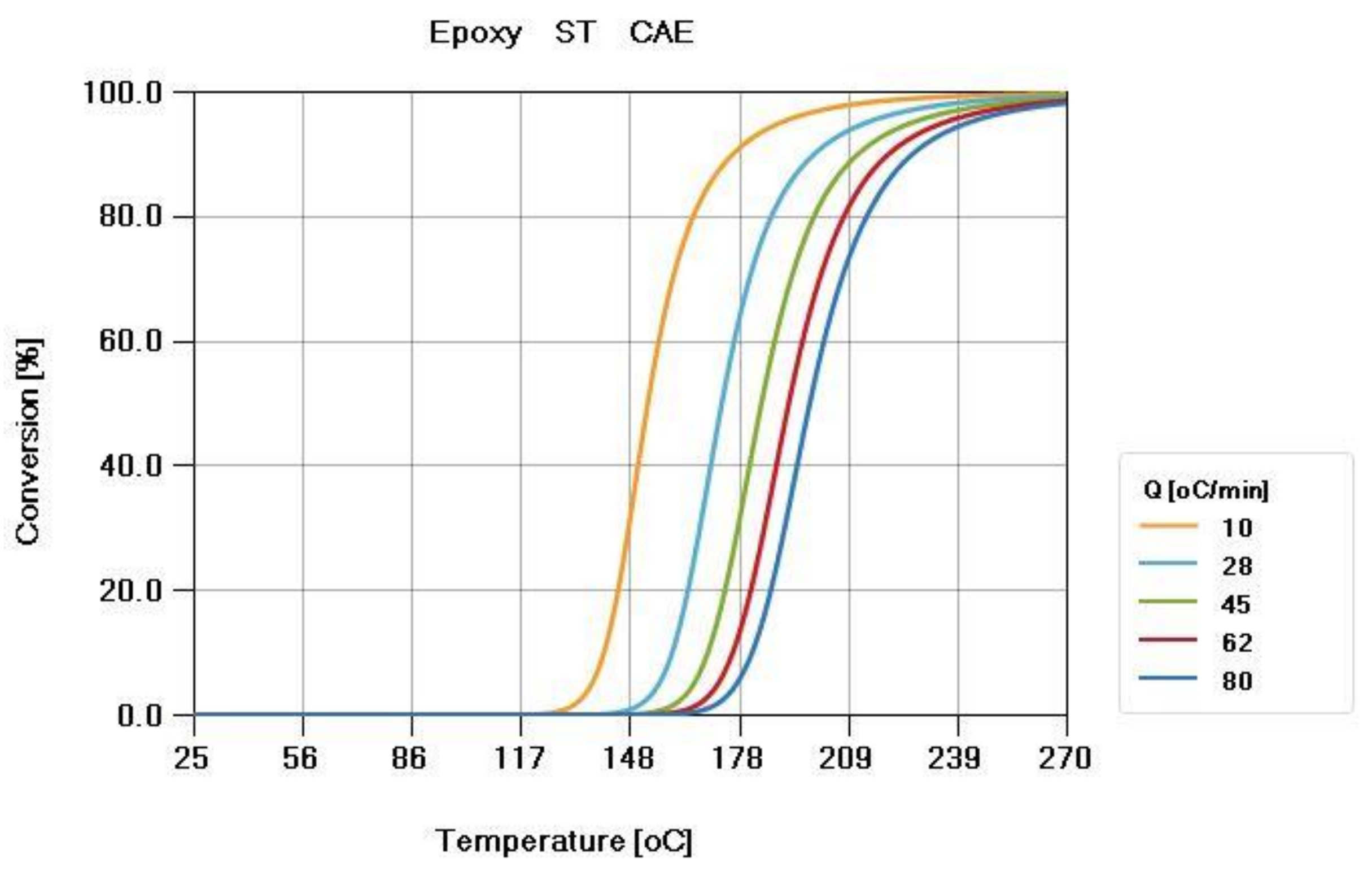
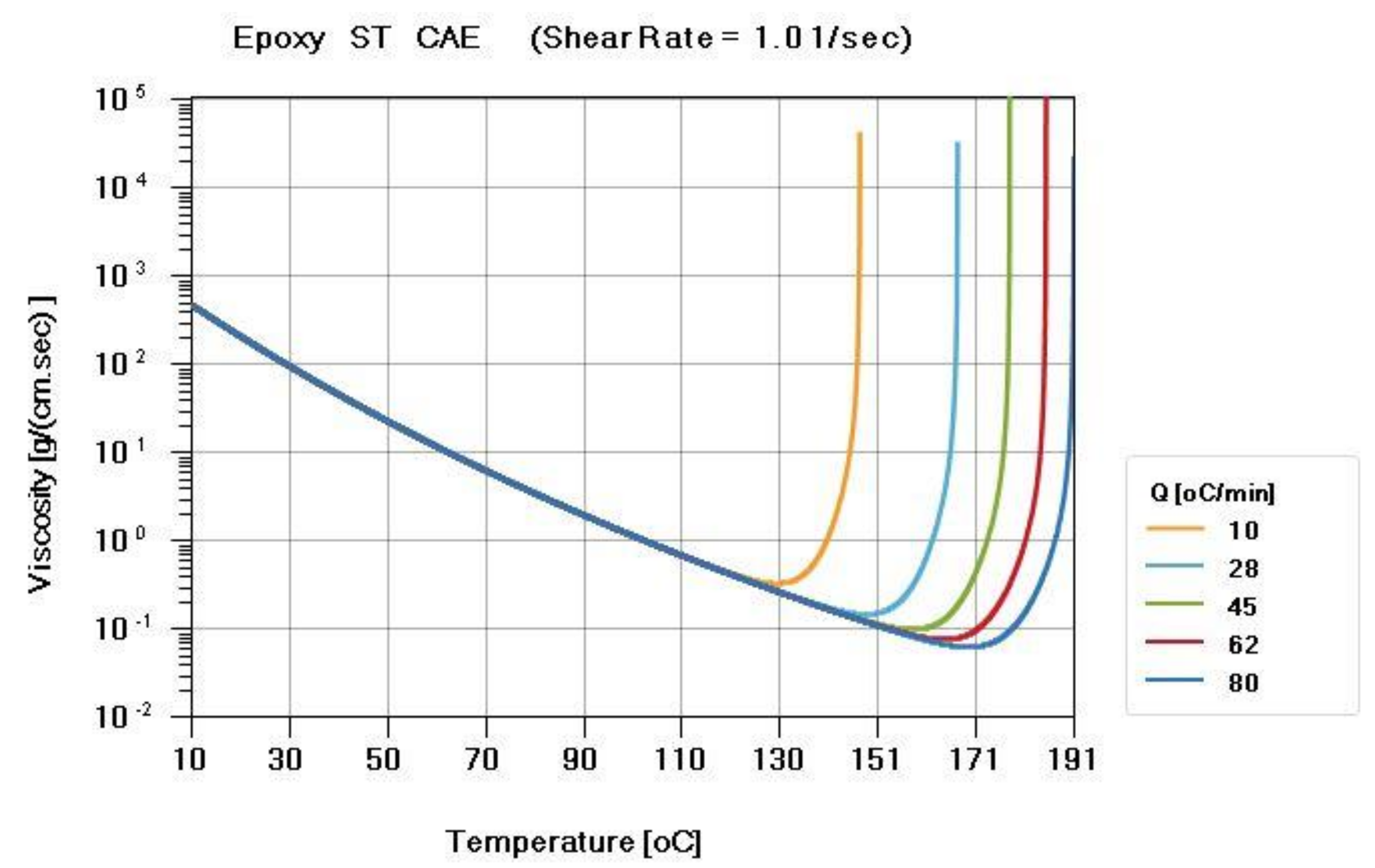

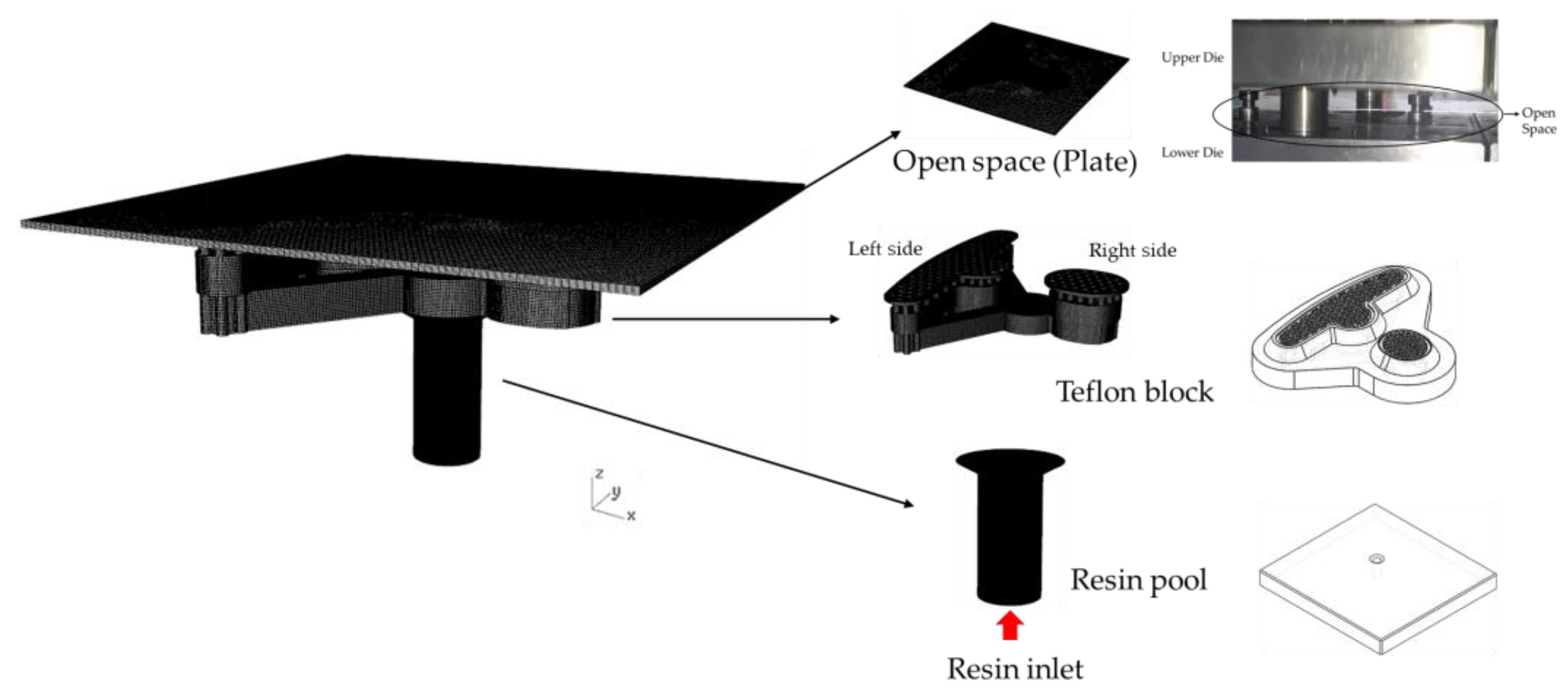
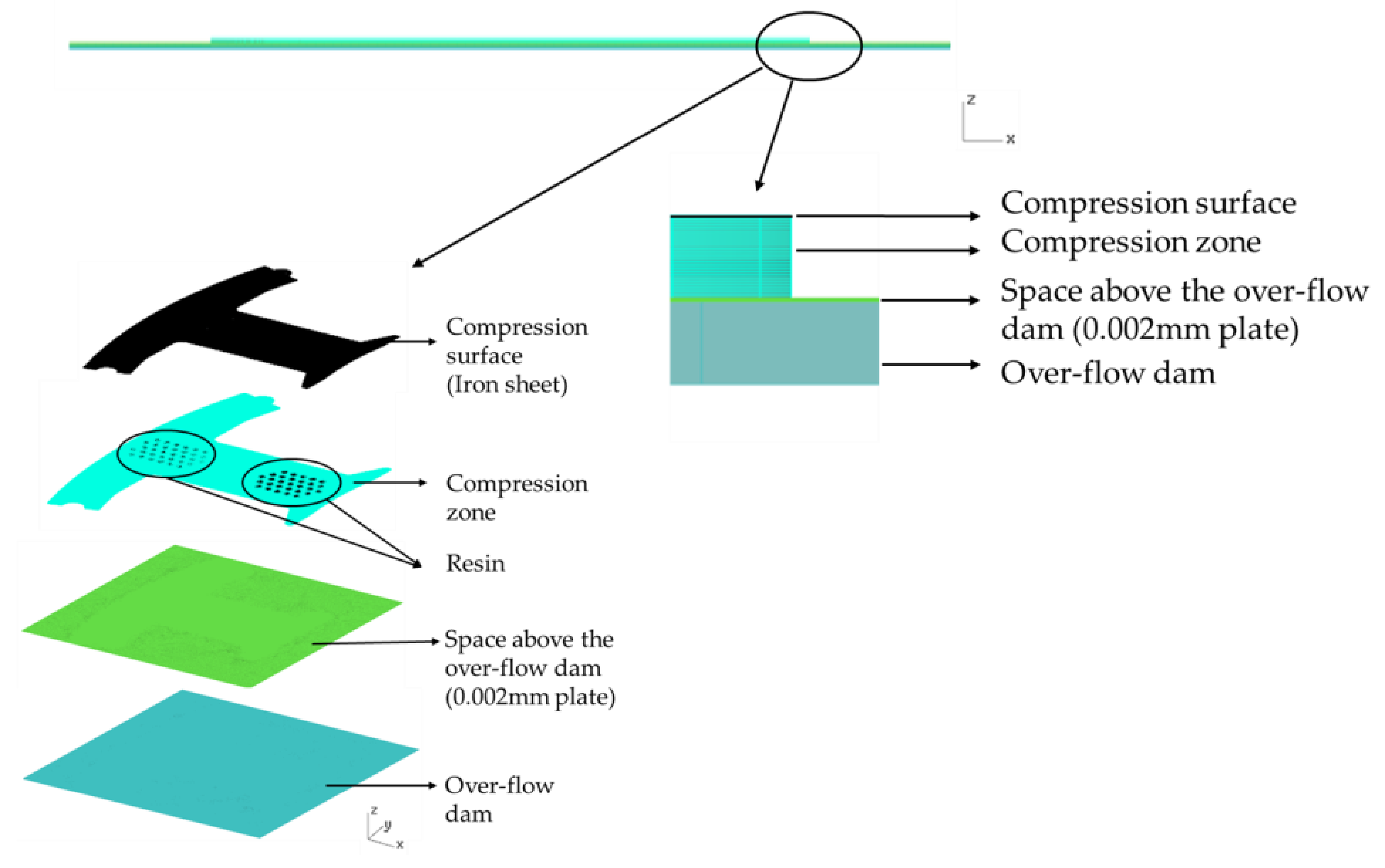




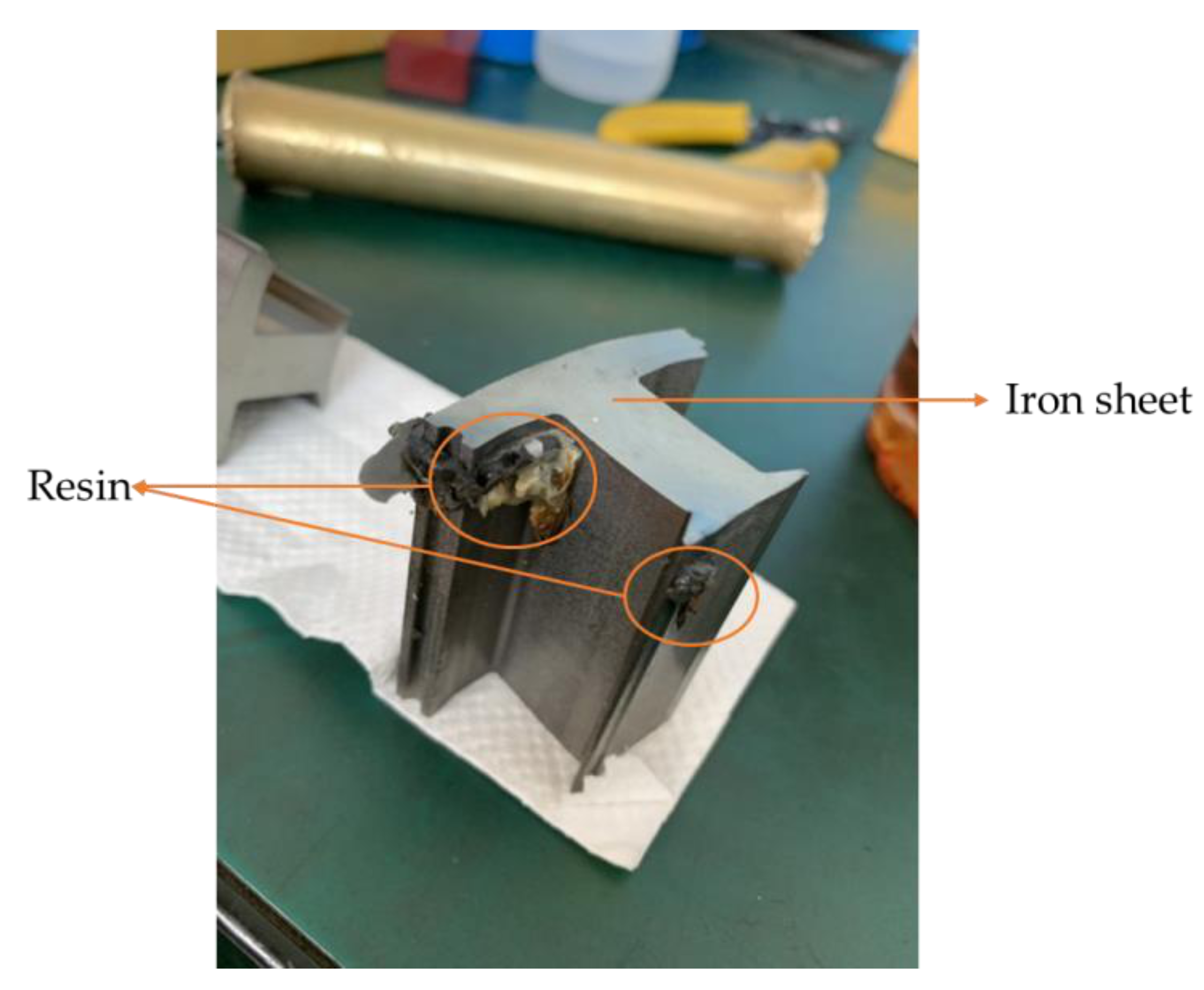
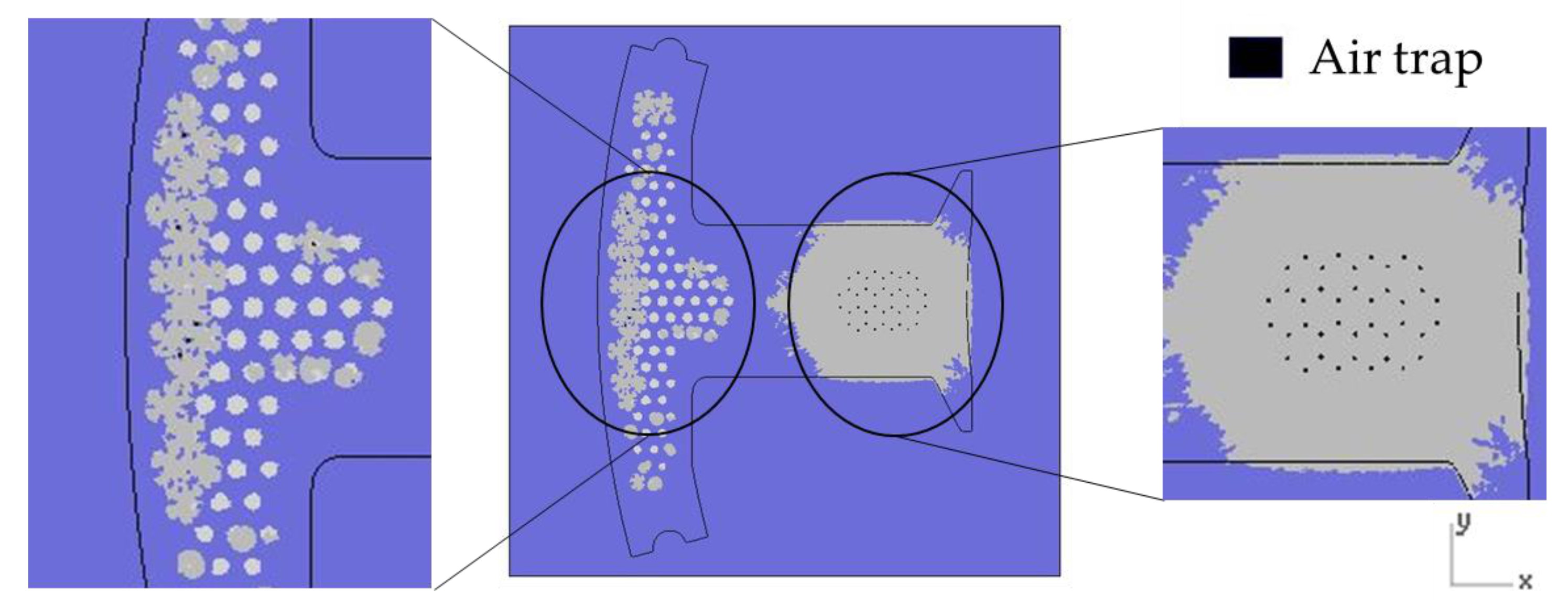
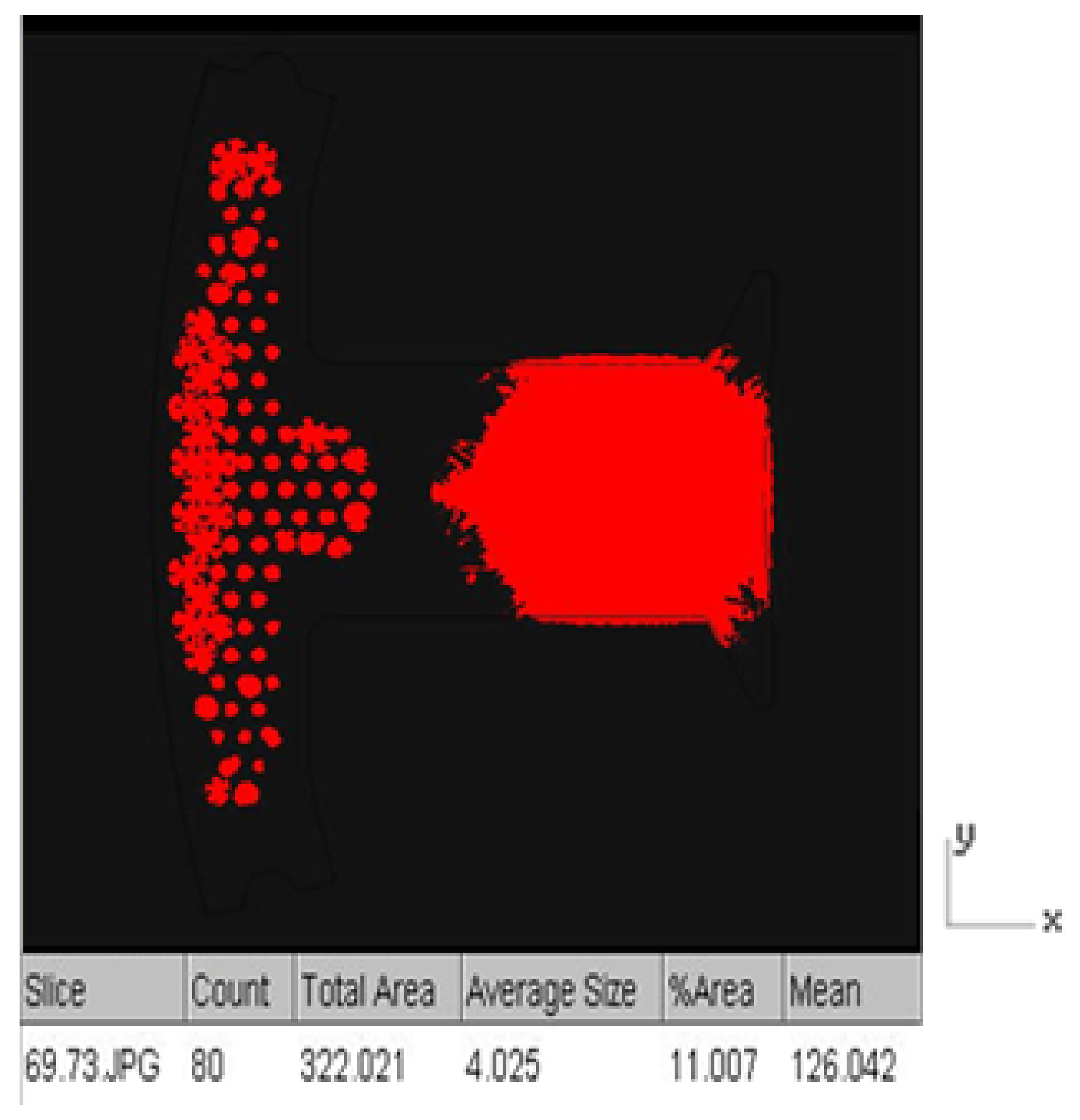
| Process Parameters | Parameter Values | Unit |
|---|---|---|
| 0.3 | - | |
| 5.3193 | - | |
| −10 | - | |
| g/(cm·s) | ||
| 7996 | K | |
| 0.8 | - | |
| 10 | dyne/cm2 |
| Process Parameters | Parameter Values | Unit |
|---|---|---|
| m | 0.75648 | - |
| n | 2.0614 | - |
| 228.29 | 1/s | |
| 1/s | ||
| 14,586 | K | |
| 8619 | K |
| Process Parameters | Parameter Values |
|---|---|
| Injection pressure (MPa) | 0.8 |
| Melt temperature (°C) | 45 |
| Mold temperature (°C) | 45 |
| Initial conversion (%) | 0 |
| Filling time (s) | 416 |
| Process Parameters | Parameter Values |
|---|---|
| Compression time (s) | 0.273 |
| Compression gap (mm) | 0.5 |
| Compression speed (mm/s) | 1.83 |
| Compression force (tf) | 0.022 |
| Resin temperature (°C) | 45 |
| Mold temperature (°C) | 45 |
| Initial conversion (%) | 0 |
| Experiment | Simulation | Experiment (Δt) | Simulation (Δt) |
|---|---|---|---|
 40 s |  279 s | - | - |
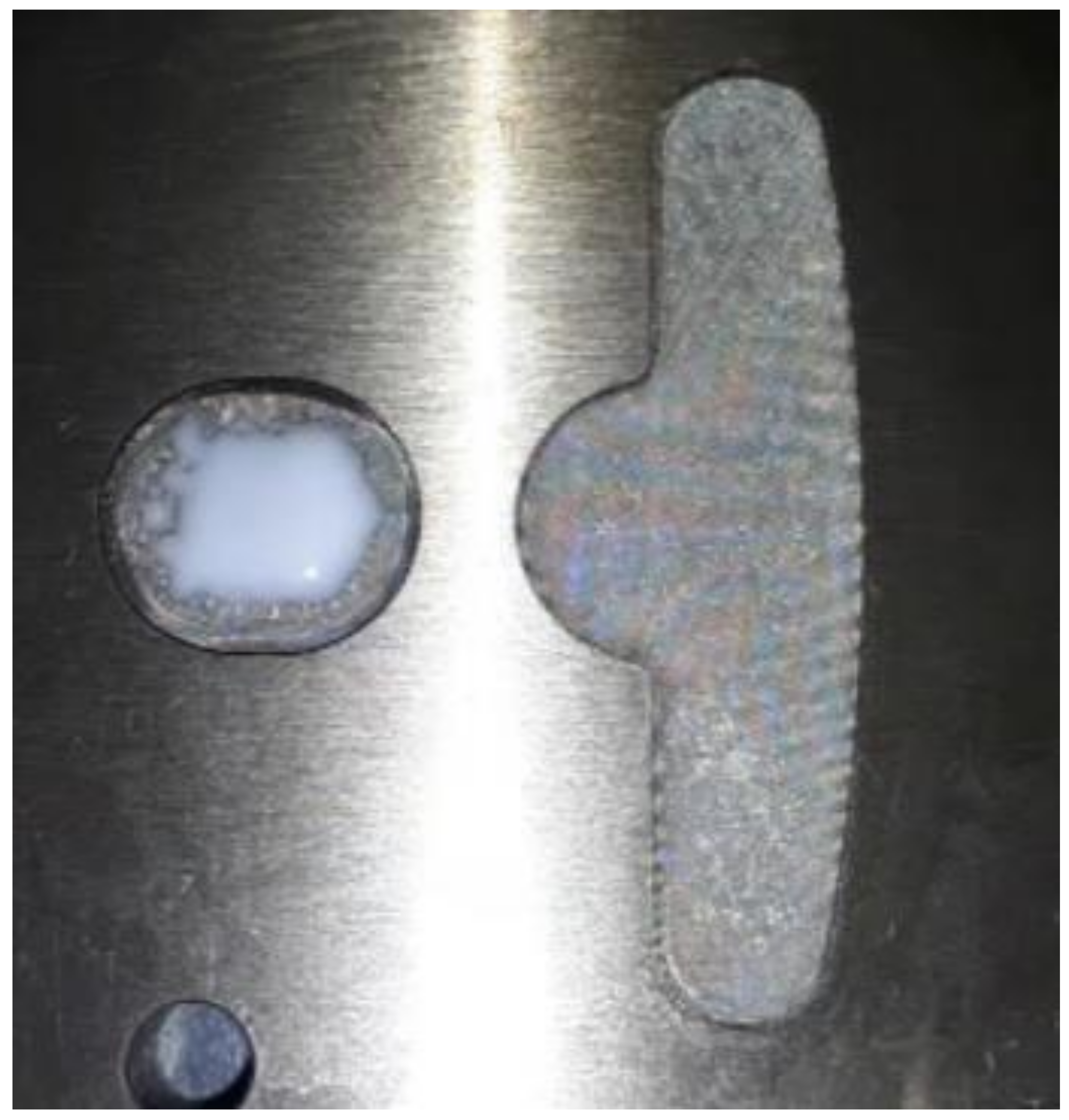 43 s | 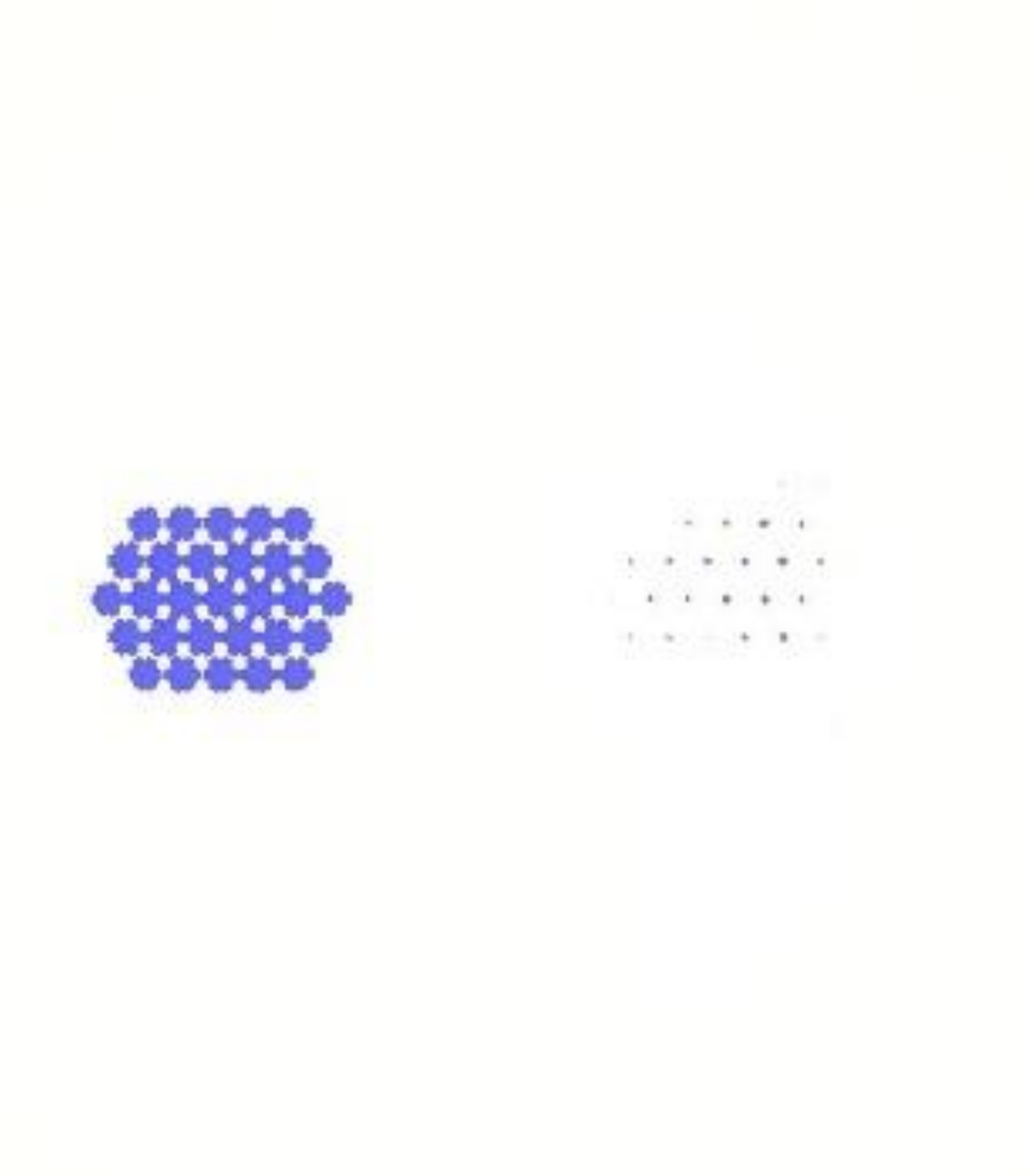 283 s | 3 s | 4 s |
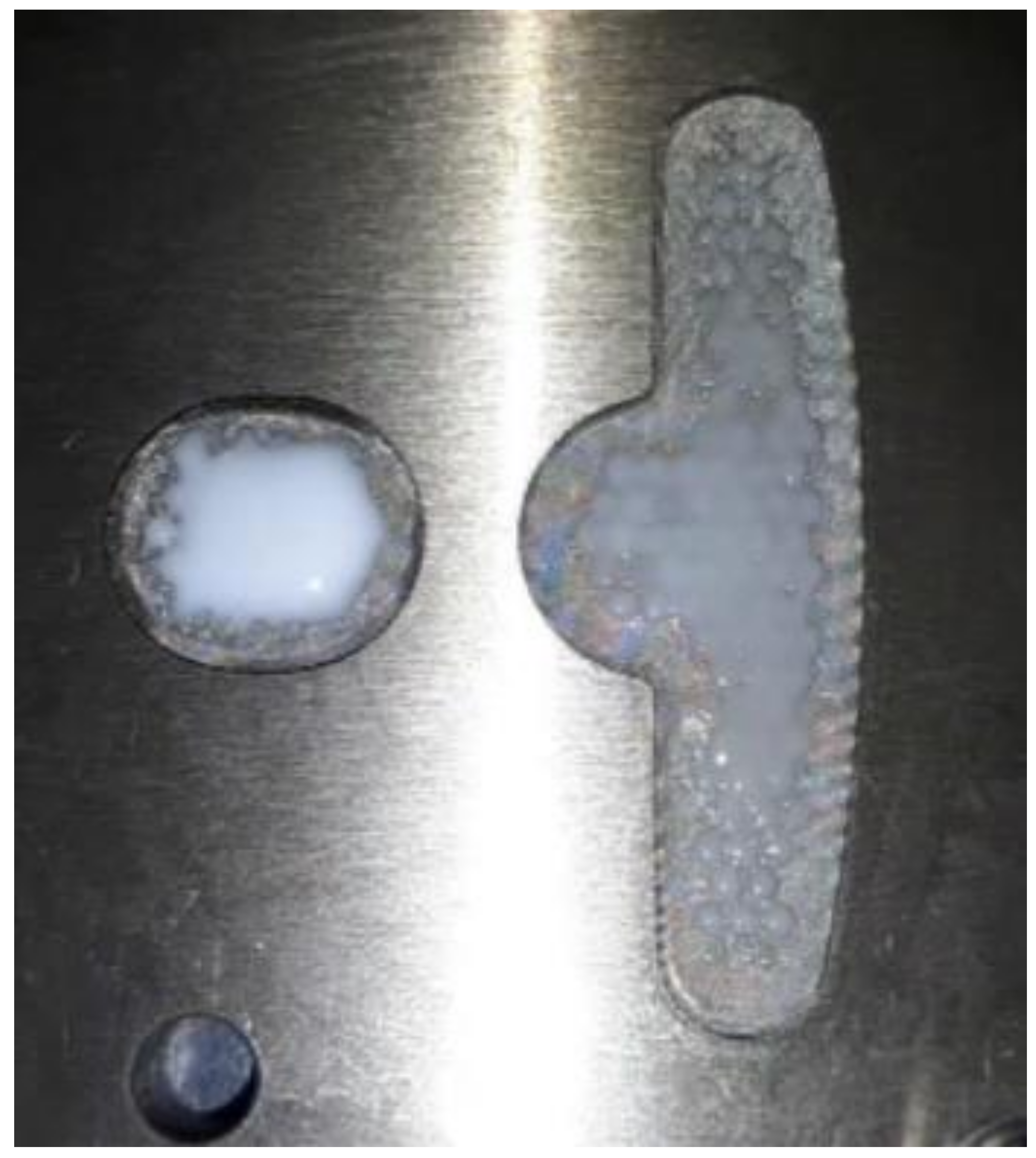 45 s |  285 s | 2 s | 2 s |
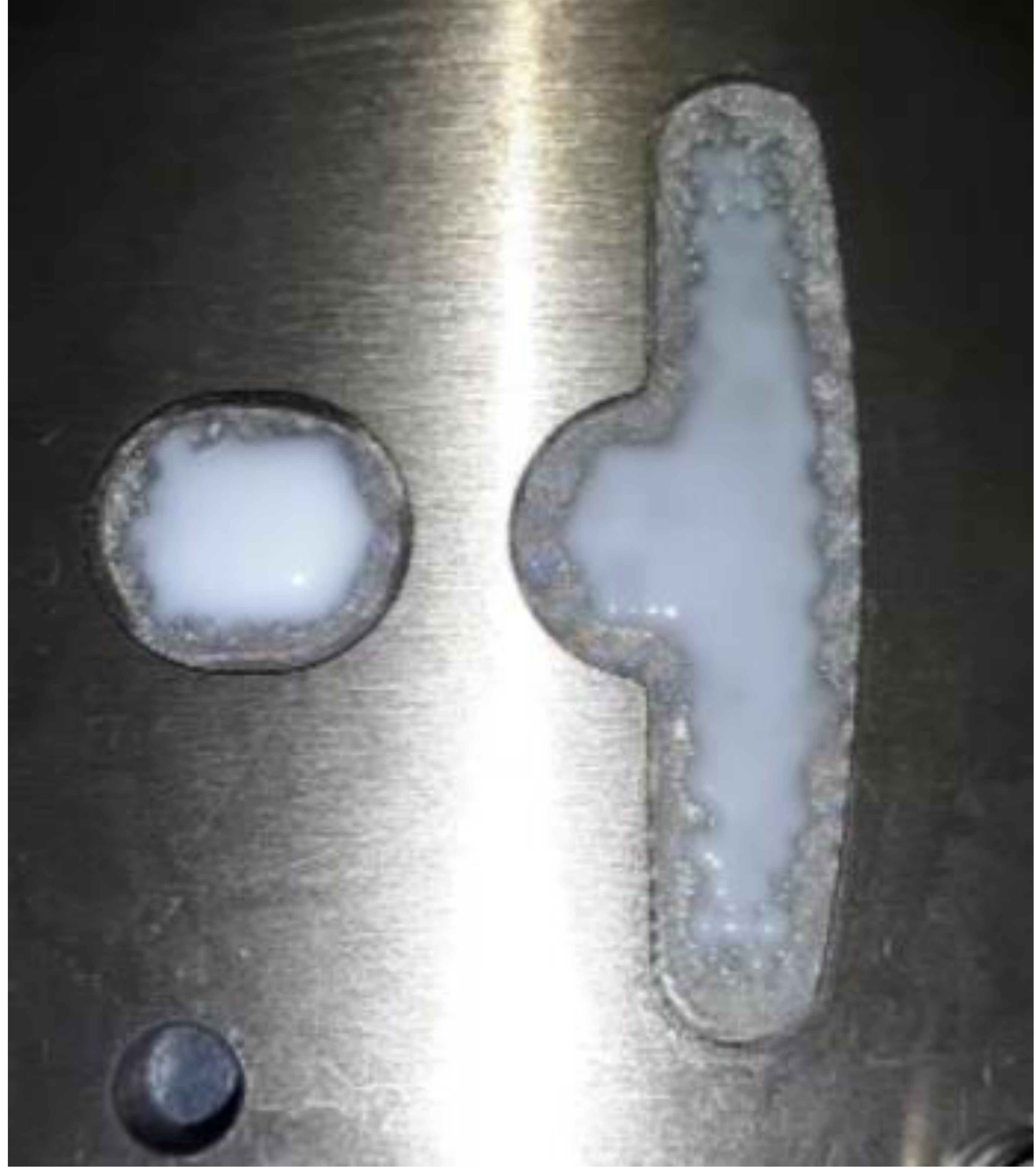 48 s | 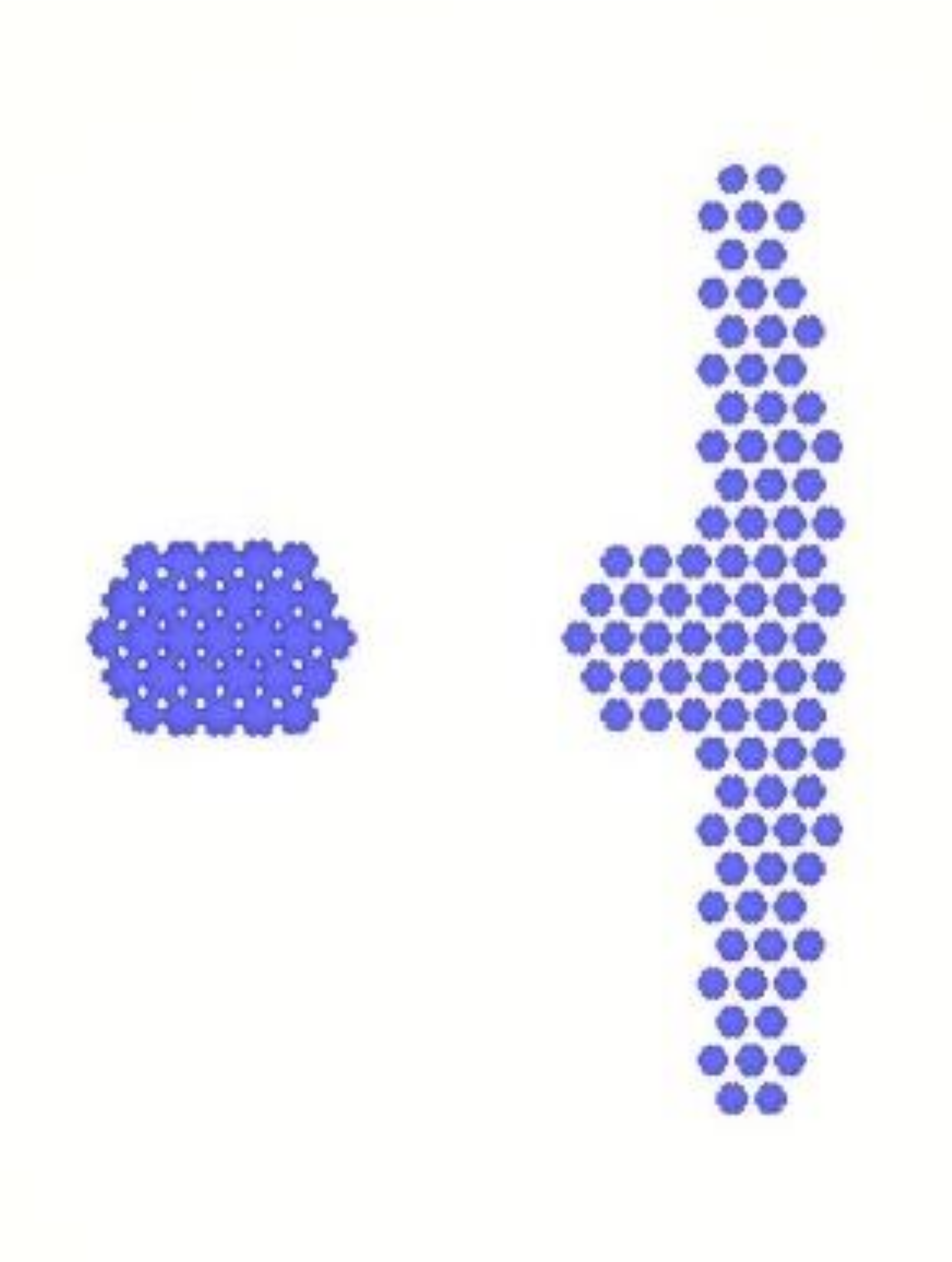 289 s | 3 s | 4 s |
Publisher’s Note: MDPI stays neutral with regard to jurisdictional claims in published maps and institutional affiliations. |
© 2021 by the authors. Licensee MDPI, Basel, Switzerland. This article is an open access article distributed under the terms and conditions of the Creative Commons Attribution (CC BY) license (https://creativecommons.org/licenses/by/4.0/).
Share and Cite
Zeng, Y.-J.; Hwang, S.-J.; Liu, Y.-D.; Huang, C.-S. Mold Flow Analysis of Motor Core Gluing with Viscous Flow Channels and Dipping Module. Polymers 2021, 13, 2186. https://doi.org/10.3390/polym13132186
Zeng Y-J, Hwang S-J, Liu Y-D, Huang C-S. Mold Flow Analysis of Motor Core Gluing with Viscous Flow Channels and Dipping Module. Polymers. 2021; 13(13):2186. https://doi.org/10.3390/polym13132186
Chicago/Turabian StyleZeng, Yong-Jie, Sheng-Jye Hwang, Yu-Da Liu, and Chien-Sheng Huang. 2021. "Mold Flow Analysis of Motor Core Gluing with Viscous Flow Channels and Dipping Module" Polymers 13, no. 13: 2186. https://doi.org/10.3390/polym13132186
APA StyleZeng, Y.-J., Hwang, S.-J., Liu, Y.-D., & Huang, C.-S. (2021). Mold Flow Analysis of Motor Core Gluing with Viscous Flow Channels and Dipping Module. Polymers, 13(13), 2186. https://doi.org/10.3390/polym13132186






